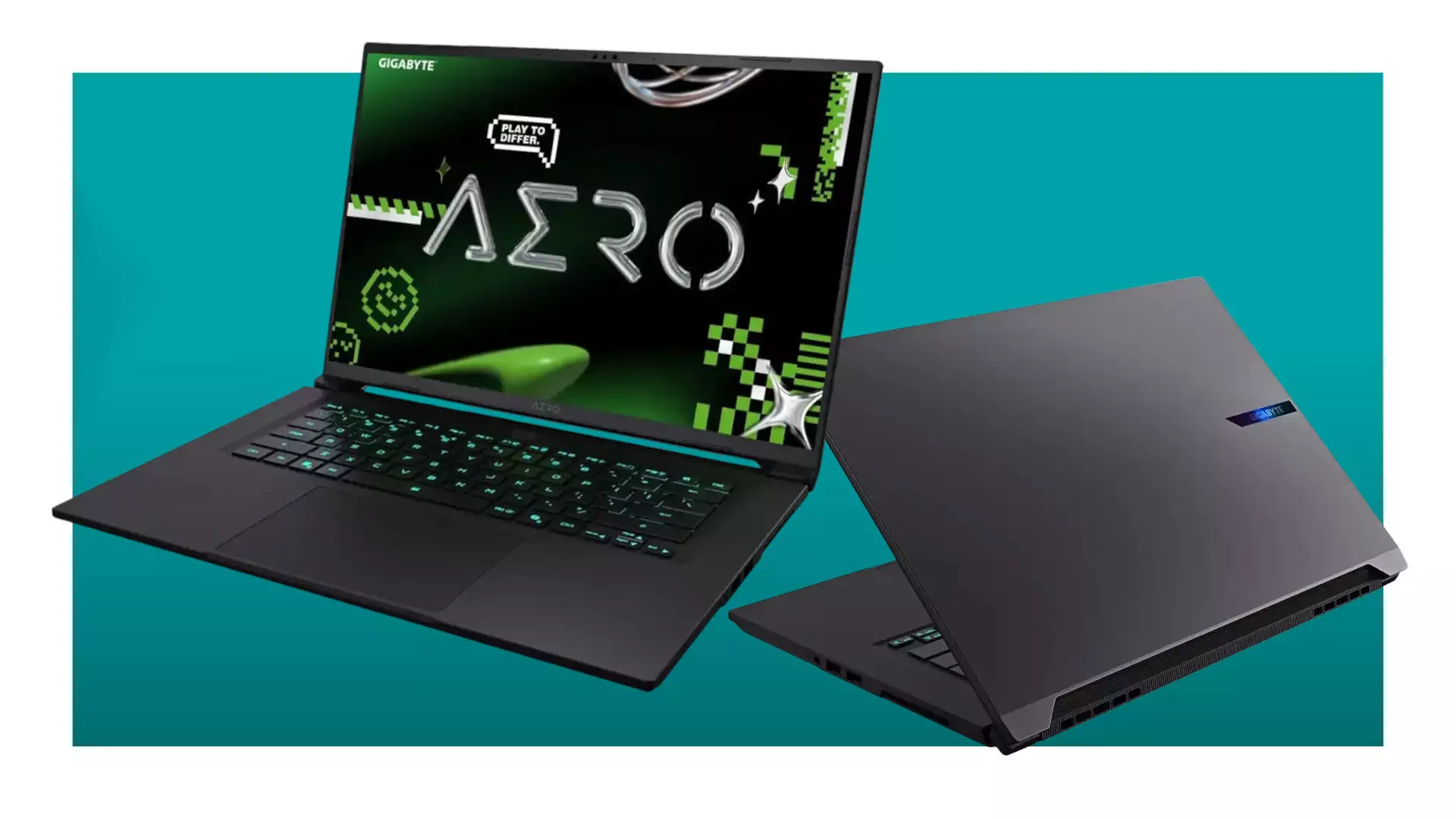The gaming laptop market has evolved into a fierce battleground, teeming with numerous manufacturers vying for the attention—and wallets—of gamers worldwide. This competition fuels innovation, offers a smorgasbord of options, and ideally results in cutting-edge technology at competitive prices. However, this very abundance can be overwhelming for consumers, especially those searching for that elusive blend of power, portability, and style. With so many specs, brands, and price points, distinguishing between the good, the bad, and the just-average becomes a daunting task. Ironically, the very competition that promises better choices can also lead to decision paralysis.
Symmetry in Design, Disparity in Performance
Recently, a pair of 16-inch gaming laptops from Gigabyte exemplify the classic dilemma for consumers—models that are nearly identical in aesthetic and core specifications but divergent in one critical component: the GPU. This nuanced difference is more than just a branding tactic; it profoundly impacts gaming performance and user experience. Gigabyte’s Aero X16 series showcases how subtle hardware variations can translate into substantial gaming advantages, making the choice between them a test of priorities rather than just budget.
The Core Hardware: Power in Numbers
Both models wield the formidable AMD Ryzen 7 7000 series processor, a Zen 5 chip that embodies efficiency and excelling in multitasking. With its eight cores (and 16 threads), it’s a powerhouse, suitable for gaming, streaming, and creative tasks. Coupled with 32GB of DDR5 RAM—likely clocked at 5600 MHz—these laptops are designed to handle not just today’s demanding games but future titles as well. Storage is equally generous; a 1TB PCIe 4.0 SSD ensures quick load times and ample space for your game library, with room for expansion through an additional M.2 slot.
What truly sets these laptops apart, however, is their display. The 16-inch IPS panel offers a crisp 2560 x 1600 resolution, combined with a 165Hz refresh rate and 400 nits of brightness. For gamers, visuals are king, and this screen promises stunning graphics with smooth motion—assuming your GPU can keep up.
The GPU Divide: Small Difference, Big Impact
Herein lies the core of the selection challenge. The first laptop is equipped with an RTX 5060 GPU, adequate for high-quality gaming at 1440p and capable of leveraging DLSS 4 for enhanced performance and visuals. Conversely, its sibling features an RTX 5070, boasting approximately 38% more shaders and CUDA cores. This upgrade isn’t just a numeric boost but a meaningful stride toward higher frame rates, better anti-aliasing, and the potential to comfortably push gameplay at the same 1440p resolution without reliance on DLSS.
In essence, the RTX 5070 transforms what would be a capable gaming system into a powerhouse ready for more demanding titles, future-proofing your investment. The price difference, roughly 13%, is a reasonable premium for that leap in performance—particularly when considering the longevity and enhanced gaming experience it affords.
Cost vs. Future Proofing: Is the Small Premium Worth It?
The question is whether investing in the RTX 5070 version is justified. Some might argue that the initial extra expense isn’t worth the performance gains, especially if they prioritize affordability. However, for serious gamers who want to maximize their gaming enjoyment, the added CUDA cores and shader count translate into better visuals, smoother gameplay, and a more seamless experience as titles evolve.
Furthermore, it’s important to recognize that the GPU is often the bottleneck in gaming machines. Upgrading from a 5060 to a 5070 isn’t merely incrementally better; it significantly extends the lifespan of the device’s gaming capabilities. In a landscape where hardware is advancing rapidly, securing the 5070 variant now can save money and frustration down the line.
The Takeaway: Choose Not Just Based on Price, but on Performance and Aspirations
In the end, the decision boils down to understanding your priorities. If you’re someone who plays casually or on a budget, the RTX 5060 model may suffice while offering excellent performance for its price. However, if you’re a gamer craving top-tier visuals and set on future-proofing your investment, the RTX 5070 version offers compelling value that justifies the slight premium. It underscores a broader truth in tech: sometimes, paying a little extra yields disproportionately larger benefits, especially when dealing with intense performance demands.
While the market’s competitiveness ensures a wealth of options, it also demands a discerning eye and honest assessment of what truly matters—whether it’s raw power, visual fidelity, or cost efficiency. In this scenario, the Gigabyte Aero X16 models serve as a reminder that even minor hardware differences can drastically shape your gaming experience. Recognizing your own priorities and future aspirations is essential in making a choice that won’t just serve today’s needs but also those of the gaming landscape tomorrow.

